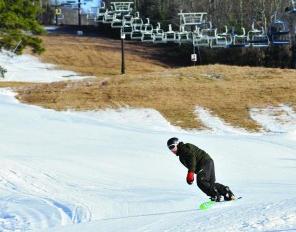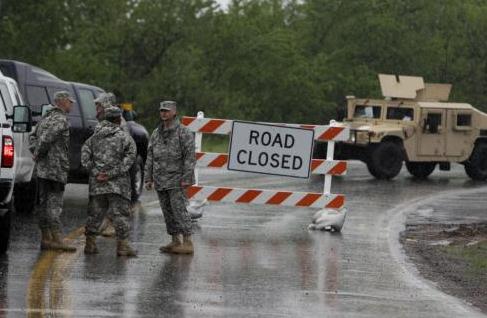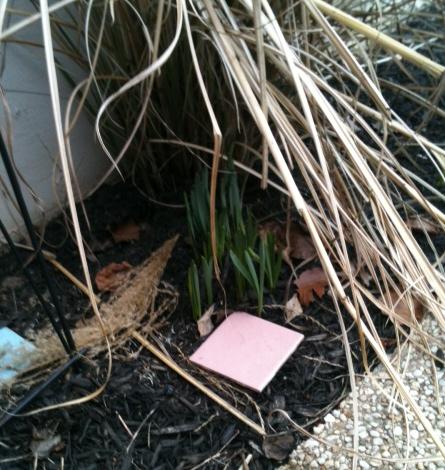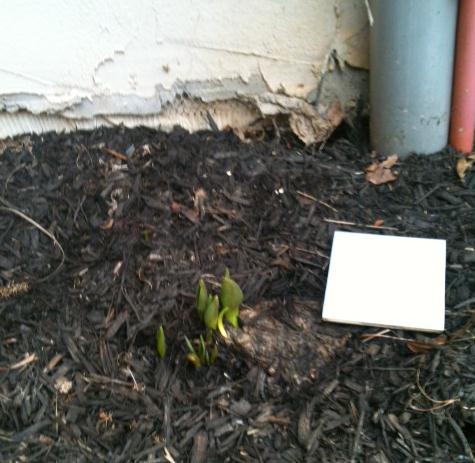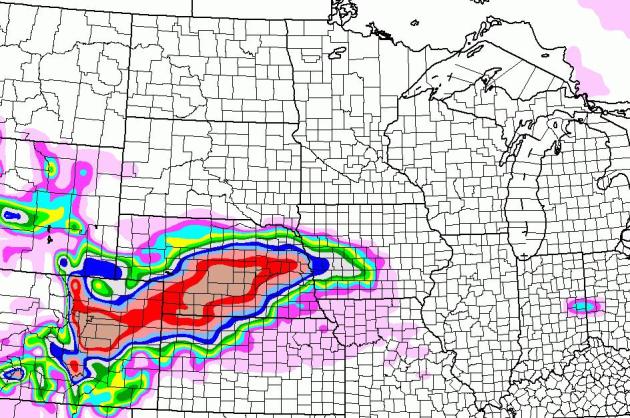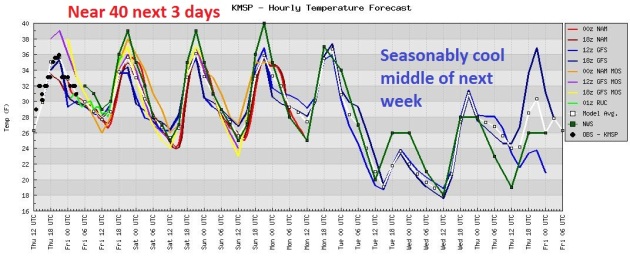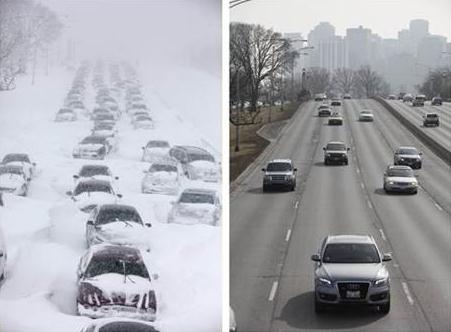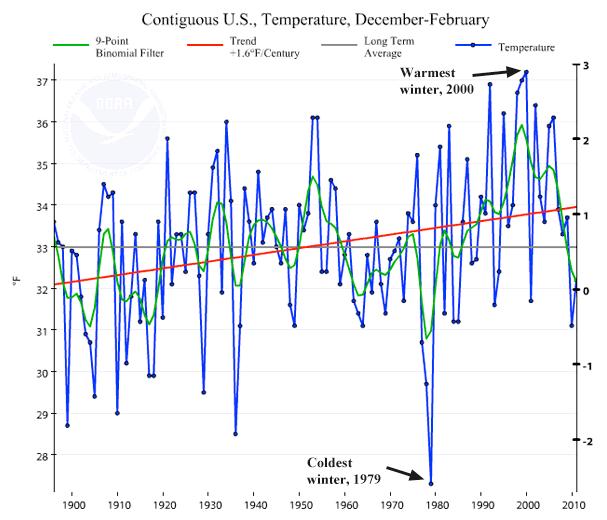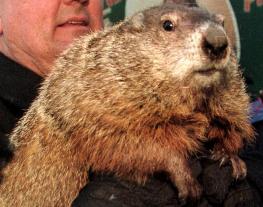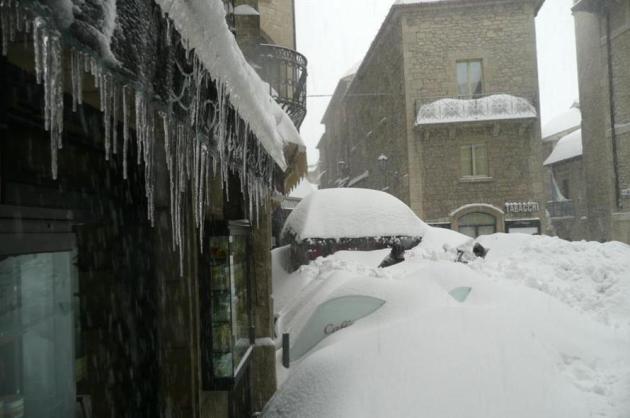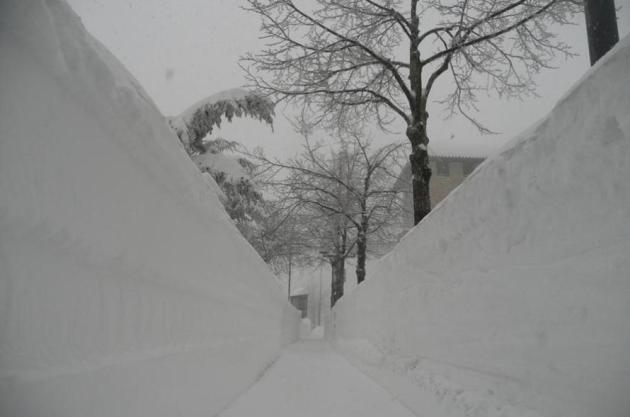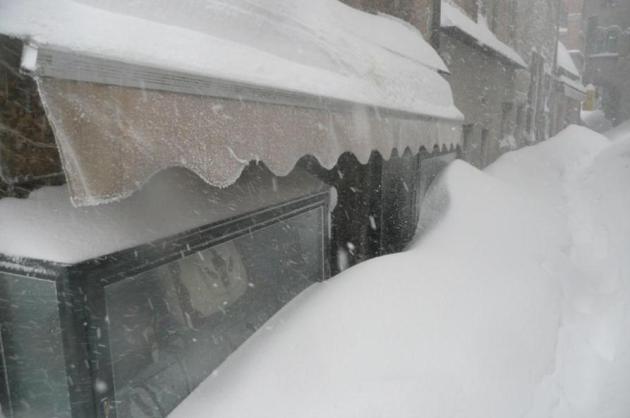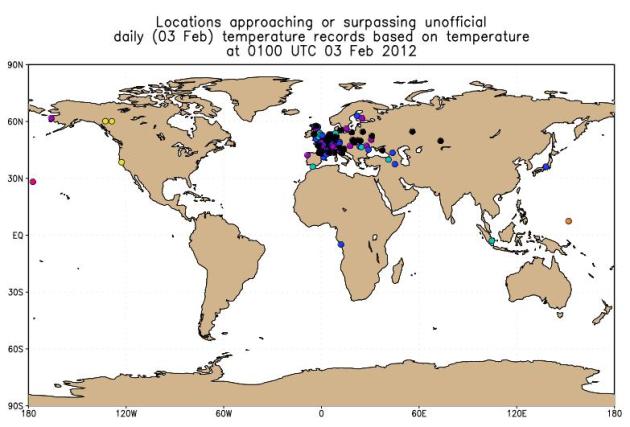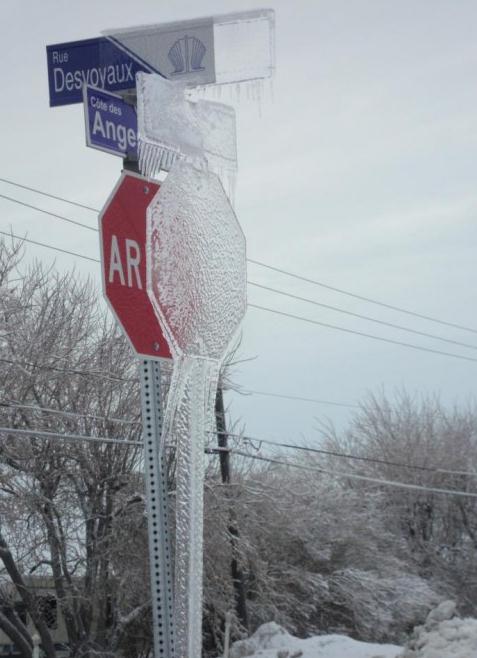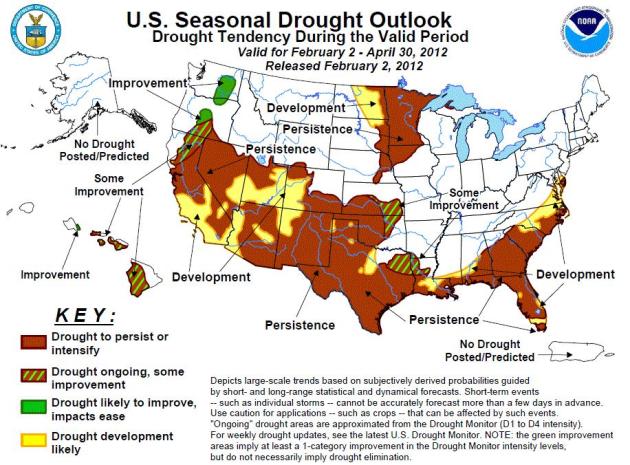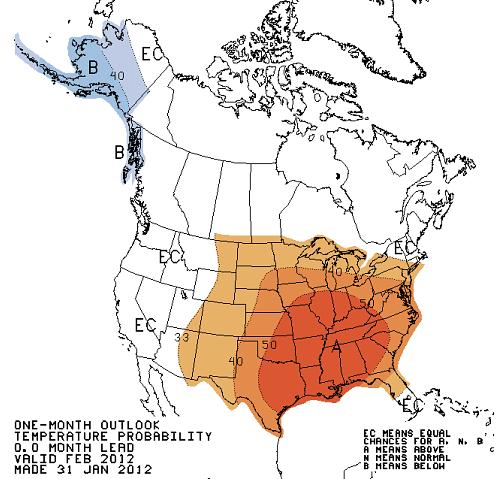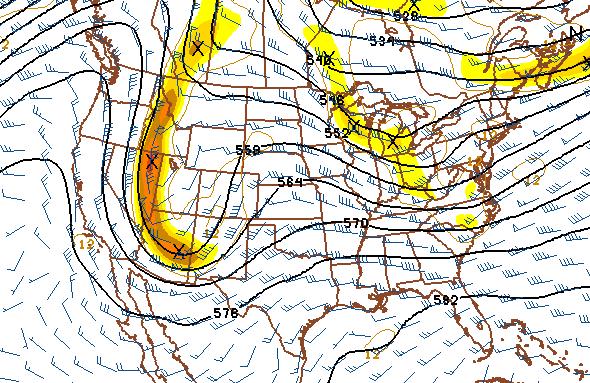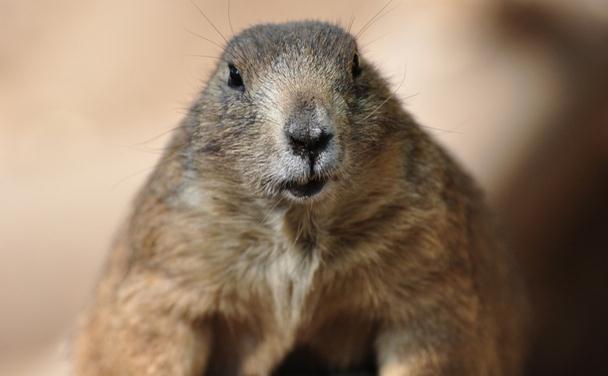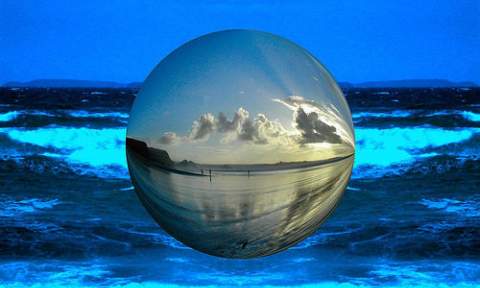1-2 FEET of snow possible in Denver by Saturday morning, probably the biggest snowstorm of winter. Denver public schools are cancelled today.
Winter Storm Watch: posted for southwestern Iowa.
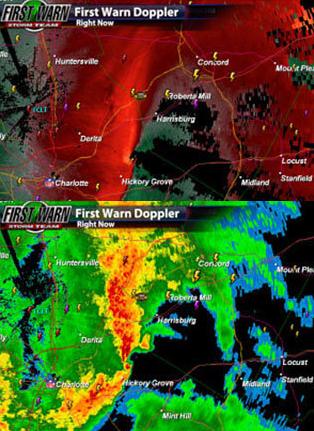
"
The trouble with weather forecasting is that it's right too often for us to ignore it and wrong too often for us to rely on it." - Patrick Young. File photo is from 1993, when I covered the "Storm of the Century" for KARE-11. Good memories.
Super Bowl Forecast for Indianapolis: flurries, highs near 37. Check out a live webcam from Earth Networks (formerly WeatherBug)
here.
$45 billion: estimated cost of extreme flooding across Thailand in 2011. Source: World Bank.
"
Bismarck, N.D., has had one-fifth its normal snow, Boston a third. Buffalo is three feet below normal for snowfall this year. Midland, Texas, has had more snow this season than Minneapolis or Chicago." - from an MSNBC.com article on a lack of real winter weather across the USA.
"January 2012 is in the weather record books as the 3rd least-snowy January for the contiguous U.S. since snow records began in 1966, the Rutgers Snow Lab reported yesterday, and December 2011 ranked as the 11th least snowy December on record....
the winter of 2011 - 2012 has a chance to end up as the second least snowy winter in U.S. history." - Dr. Jeff Masters in his latest Wunderblog. Details below.
"
The winter of 2011-2012 is already among the top 20 warmest in historical memory, and is likely to earn a third- or fourth-place record in parts of New York and New Jersey, said Art DeGaetano, a climatologist and professor of Earth and atmospheric sciences at Cornell University. That conforms to the trend of the past decade, which has seen three of the four warmest winters since meteorological data collection began, he said." - from a Scientific American article below.
"
The National Flood Insurance Program has written 5.5 million policies in more than 21,000 communities covering $1.2 trillion worth of property (in the USA). As for the vaunted private market, for-profit insurance companies write between 180,000 and 200,000 policies in a given year. In other words, that is less than 5% of all flood insurance in the United States. This federally subsidized program underwrites the other 95%. Without such insurance, it’s not complicated: many waterlogged victims of 2011, whether from record Midwestern floods or Hurricane Irene, would simply have no money to rebuild." - from an article in Le Monde. Details below.
Amazing new iPad app for tracking severe weather. Details on "
iDamage" below.
A Bad Winter To Be A Snowman. Thanks to Twin Cities meteorologist Tony Perkins for reminding us how hard it is to be a snowman this winter.
Daffodil Alert. Thanks to
topsy.com and "epilnivek", who used Instagram to snap this photo of his daffodils sprouting in the suburbs of Memphis. I know - it's too early to even think about spring fever, but I just can't help myself.
Early Spring? Exhibit A. Thanks to my dear sister, Joan, who lives in Lancaster, PA (about 70 miles west of Philadephia) for sharing these photos of tulips and daffodils sprouting in her yard. In fact the daffodils came up in early January!
From Winter Fest to "Slush Fest". When in Rome...do the best you can with you've got, right? A dire lack of snow is forcing city leaders to be very creative these days.
MLive.com has the details: "
The Boyne Area Chamber of Commerce planned its annual Winter Fest for the usual February timing, when mounds of snow and frozen Lake Charlevoix make for great ice fishing, skiing and other winter sports. In fact, here's what Chamber Executive Director Jim Baumann told the Petoskey News on Jan. 27: "A new part of the festival we're really excited about is the skiing and snowshoeing." That was before the 46-degree temperatures on Tuesday pretty much blew any hope for sufficient snow."
Watches And Warnings. Dense fog remains a problem from the eastern Dakotas across much of central Minnesota to Madison and the Chicago area, while Blizzard Warnings are posted from the Denver area into western Kansas and Nebraska, a Winter Storm Watch stretching into southwestern Iowa. Map courtesy of NOAA - click
here for the latest information.
Rare February Blizzard. The NAM model prints out 12-18" snow from the suburbs of Denver across much of Nebraska, some 6-10" amounts possible in the Omaha area, a "plowable" snowfall for far southwestern Iowa. Map courtesy of WeatherCaster.
Marchlike Weekend - Cooling Trend Next Week. Although I still don't see any more subzero nights, temperatures will return to "average" levels by the middle of next week, highs in the low to mid 20s by Wednesday of next week. A quick rebound is likely, highs rebounding into the 30s by the third week of February.
Extended Outlook: No Arctic Air In Sight. Is it possible we've seen our last subzero nights of winter? We've only picked up 3 nights of negative numbers (all in January), and I don't see any numbing air through Feb. 18. Highs reach the 30s (consistently) the third week of February.
What Winter? AP and
MSNBC.com have more details on the Wimpy Winter of '12: "
WASHINGTON — Snow has been missing in action for much of the U.S. the last couple months. But it's not just snow. It's practically the season that's gone AWOL. "What winter?" asked Mike Halpert, deputy director of the National Weather Service's Climate Prediction Center. For the Lower 48, January was the third-least snowy on record, according to the Global Snow Lab at Rutgers University. Records for the amount of ground covered by snow go back to 1967. Last year, more than half the nation was covered in snow as a Groundhog Day blizzard barreled across the country, killing 36 people and causing $1.8 billion in damage. This year, less than a fifth of the country outside of Alaska has snow on the ground."
Photo credit above:
Kiichiro Sato/AP. "A year ago on Feb. 2, 2011, hundreds of cars were stranded on Lake Shore Drive in Chicago, Ill., seen at left. The same stretch is seen on Wednesday."
"6 More Weeks Of Non-Winter". Dr. Jeff Masters has an interesting evaluation of our current "winter", trying to put things into perspective. Here's an excerpt from his excellent
Wunderground Blog: "
This January's remarkable warmth and lack of snow contrasts starkly with what happened during the previous two winters. January 2011 was the 5th snowiest and 35th coldest in U.S. history, and January 2010 was the 7th snowiest and 55th coldest. Wunderground meteorologist Angela Fritz had this to say in her blog post yesterday about what's been going on this winter: In December, we were reporting that the lower-48's unseasonably warm weather and lack of snow was due to a particularly positive Arctic Oscillation (AO) index. The Arctic Oscillation is a measure of the jet stream's strength. A positive AO is a stronger than average jet stream, and it tends to keep cold air bottled up in the Arctic. During a positive AO, the Arctic is colder than average, and the mid-latitudes are warmer than average. In December and early January, the AO was positive. In mid-January, the AO went negative, which we expect to have the opposite impact. A weak jet steam means cold, Arctic air can escape to the south, and that's what we've been seeing in Europe this week."
Image credit above:
"Winter temperatures in the contiguous U.S. during the period 1895 - 2011 increased at a rate of about 1.6°F per century. The warmest winter was 1999 - 2000, and the coldest was 1978 - 1979." Image credit: Weather Underground and NOAA/NCDC.
WGN TV's Tim McGill: "Meteorologists Dread Groundhog Day." More from
TVSpy: “
I wanted to take this opportunity to launch a preemptive strike by whacking the weasel with some facts about his forecasts,” McGill wrote on the WGN weather blog. “Most meteorologists dread Groundhog Day.” McGill, who has been a meteorologist for 26 years, says the groundhog is accurate in his prediction just 39% of the time. “Punxutawney Phil is a punk when it comes to weather forecasting,” McGill wrote. “We may as well ask a giraffe for stock picks, he could probably be just as accurate.”
Predicting Temperatures: NOAA Vs. Punxsutawney Phil. NOAA has a recap of recent predictions from the furry prognosticator in Pennsylvania, and how he stacked up against NOAA's supercomputers outside Washington D.C.: "
The table (above) gives a snapshot by year since 1988 whether Phil saw his shadow or not along with the corresponding monthly national average temperature departures for both February and March. The table shows no predictive skill for the groundhog during the most recent years of this analysis. Since 1993, the U.S. national temperature has been above normal 10 times in February, 11 times in March, below normal 6 times in February, 3 times in March, and near normal 3 times in February and 5 times in March."
Two FEET Of Snow For The Mile High City? NOAA's
NCEP models are predicting anywhere from 1-2 feet of snow for Denver over the next 36-48 hours - I have a hunch KDEN will see delays, even some cancellations. If your travels take you into Denver through Friday night you may want to consider a Plan B.
Biggest Snowstorm Of The Winter For Denver? More details on the imminent snow blitz from
The Denver Post: "
Denver's biggest snowstorm this year could dump a month's worth a snow by the weekend, according to the latest National Weather Service forecast. The city is expected to receive at least 6 inches of snow, which would be more than February's 30-year average of 5.7 inches for the month. TV weather forecasters and weather enthusiasts on Twitter tonight are interpreting models to say Denver could get a foot or more by the time the storm moves out late Friday or sometime Saturday."
Snowpocalypse In Italy. Giorgio Cappelli sent us these photos from central Italy. He reports 200-250 centimeters of snow from the current system. That's anywhere from 75-100" of snow. Entire towns in Tuscany have been buried under 6-10 foot drifts. Check out his photo album
here, courtesy of meteonetwork.it.
Brrrrrr. While we search for a real winter, jet stream winds have buckled over Europe, plunging bitter air southward from Siberia and Scandanavia. "
A warm covered pug dog strolls on a street in Gelsenkirchen, Germany, on a cold winter Thursday, Feb. 2, 2012. Germany faces freezing temperatures coming from Russia down to minus 15 degrees Celsius (5 degrees Fahrenheit). (AP Photo/Martin Meissner)."
A Four-Wheel Drive Ferrari? I think the new FXX may be all-wheel drive, but the home of Ferrari (Maranello, Italy) has been buried under 3 foot snowfall amounts. More details: "
An employee leaves the Ferrari headquarters in Maranello, central Italy, Thursday, Feb. 2, 2012. Ferrari has canceled Friday's official launch of its new Formula One car because of the adverse weather conditions affecting the north of Italy. Heavy snow has been falling since Tuesday afternoon and Ferrari has now decided to cancel the ceremony and will simply publish pictures and technical details online. (AP Photo/Marco Vasini)."
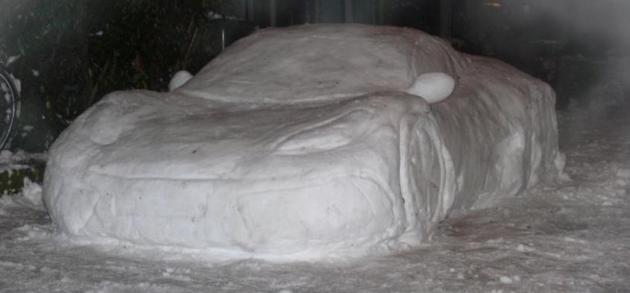 Record-Breaking Territory
Record-Breaking Territory.
CoolWx.com has a terrific site, one that displays U.S. and global maps showing which towns are approaching or surpassing all-time record highs, lows, precipitation, snowfall, etc. Note how all the current records are clustered in Europe, reflecting the recent surge of arctic air and record snowfalls.
Photo Of The Day: "Stopcicle". A raging ice storm triggered a very strange effect on a stop sign in Ontario, Canada.
Neatorama has the details: "
This picture was taken yesterday in Mirabel, Quebec. There was some discussion of its location at reddit, where we are assured that in France, stop signs say “Stop” instead of “Arret.” Link -via reddit (Image credit: benim ergani)."
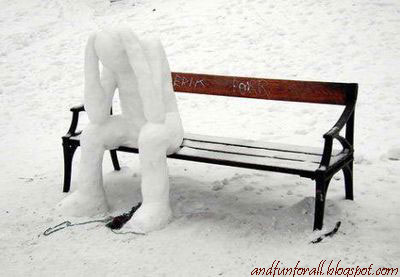
"
No winter lasts forever; no spring skips its turn." - Hal Borland
Drought-Free Dallas? According to the latest
NOAA Drought Monitor the immediate Dallas/Ft. Worth metro area is drought-free for the first time since July 5, 2011. That said, most of the rest of Texas is experiencing extreme to exceptional drought conditions, but at least there has been some relief over far northeastern counties.
Minnesota Drought Outlook: "Persistence" Over Minnesota. NOAA is reflecting my (gut feel): that Minnesota's drought may get worse before things (hopefully) improve later this year. No question we're stuck in a dry rut, one that may impact agriculture and lake water levels if we don't pick up a few significant storms in the next 60 days.
Sorry Phil. CPC, NOAA's Climate Prediction Center, is predicting (much) warmer than average conditions over the eastern 2/3rds of America, the result of a persistent La Nina and winds aloft blowing from the Pacific vs. the Yukon. Place your bets. 6 more weeks of winter? Don't bet on it.
App Of The Day. If you're a weather geek (uh...weather enthusiast) this is one app you should add to your iCollection:
iDamage. You can see severe weather reports in real-time for Minnesota, or anywhere in the USA. You get visual and audio alerts as well, and these are customizable, so you can only hear alerts for specific states or cities you're interested in. It's the best $1.99 I've spent recently, and if you download it on your iPad it auto-downloads to your iPhone as well. "
iDamage pushes storm damage reports originating from trained spotters, emergency responders, and members of the public to your iPhone, iPod Touch, or iPad (in native resolution). If you chase tornados, hail, or high winds for a living, or volunteer to assist your community during severe weather events, or just want to improve your situational awareness on days when storms might pop up, iDamage is the app for you."
Seinfeld Acura NSX Spot. I'm a jaded skeptic (from standing too close to the Doppler over the years) but this is a very funny commercial for the (breathtaking) upcoming hybrid Acura NSX (model year 2014 or 2015, I believe). Check out the
YouTube Clip (with a cameo appearance by Jay Leno). "
Jerry Seinfeld is so excited about the new Acura NSX that he will stop at nothing to acquire the very first one. Check out the extended version of Acura's big game commercial. See what else Jerry would do for the first new NSX at www.acura.com. NSX projected debut in next three years."
"
No matter how rich you become, how famous or powerful, when you die the size of your funeral will still pretty much depend on the weather." - Michael Pritchard
Fluke...or Trend?
Yes, that furry little vermin, Punxsutawney Phil, did in fact see his shadow, dooming us to 6 more weeks of winter. To which I ask, "what winter"? The USA is on track to experience the second least snowiest winter since 1895. According to Scientific American this winter will easily wind up in the "Top 20 Warmest"; my hunch is we'll wind up the Top 10.
Since 2000 America has experienced 3 of the 4 warmest winters on record. Wunderblog's Dr. Jeff Masters reports, "The five warmest U.S. winters since record keeping began in 1895 have all occurred since 1992." Oh no, Paul is launching into one of his climate change diatribes again. Spare me. But here's the thing: weather and climate are flip sides of the same coin. You can't talk about one without acknowledging the other.
La Nina has hijacked our jet stream, keeping winds blowing from the Pacific, while those same high-altitude winds have buckled over Europe, spawning record 90+ inch snows as far south as Italy! I've never seen anything like it.
Denver picks up 1-2 feet of snow; the storm passes south of Minnesota. No significant snow for our zip code thru mid February, highs mostly in the 30s. Our endless November drags on.
"The five warmest U.S. winters since record keeping began in 1895 have all occurred since 1992, with the winter of 1999 - 2000 holding the record for warmest winter. Winter average temperature in the contiguous U.S. has been increasing by about 1.6°F per century since 1895." - Dr. Jeff Masters, from his most recent Wunderblog post.
Climate Change Is Putting Punxsutawney Phil Out Of A Job.
The Atlantic has the story; here's an excerpt: "
With the non-winter we've had here on the East Coast, this year, Punxsutawney Phil could not have done his job right no matter what the little guy predicted. "This is the most philosophically perplexing Groundhog Day ever," noted CNBC's John Carney. This year, our furry meteorologist "saw his shadow," meaning six more weeks of winter. But, what does that mean when the winter hasn't happened? We can't have six more weeks of something we haven't had. Perhaps six more weeks of non-winter is ahead. "Six more weeks of winter would imply there has been one in the first place," adds @globeandmail. Groundhog Day has become a paradox. Phil can't have the right answer, making his job basically obsolete."
Photo credit above: flickr/StephenZacharias
Could Climate Change Put The Groundhog Out Of Business? Scientific American has the story: "
The United States' smallest meteorologist must be scratching his head about now. Each February for the past 125 years, Punxsutawney Phil -- the Pennsylvanian groundhog long considered a living symbol of Groundhog Day -- has sauntered from his burrow to cast a shadow on the weeks and months ahead. His predictions, though not always accurate, are cheered by hundreds of fans who flock to his den at Gobbler's Knob, a wooded hillock just outside the town that bears his name. The ground rules for Phil's tradition have always been clear: If the groundhog sees his shadow, six weeks of winter are yet to come; if no shadow appears, then spring is on its way."
Don't Blame Global Warming For Midwest's Mild Winter. MyFoxDetroit has the story: "
SOUTHFIELD, Mich. (WJBK) - It's been a mild winter across the Midwest to say the least. Temperatures in the 50s and the limited snow storms have had people emailing FOX 2 and asking, "why?" For answers, we turned to Tom Wagner, Cryosphere Program Manager with NASA, to give us an explanation.
Q: Here's what people want to know. Is this global warming?
TW: Probably not. This is probably within the natural variability. If you look at the amount of snowfall we've had this year, it seems like it's a lot less than there's ever been. But in 2006, we actually had less at this point. That doesn't mean that the planet's not warming up. We're certainly losing ice from all the polar regions and all the icy spots around the globe."
"Hardiness Zones" Continue To Creep North. We're not seeing the volume of arctic air and subzero lows we experienced a generation ago in Minnesota. According to USDA the southern suburbs of the Twin Cities are now in Zone 5a, meaning new plants and flowers (that grew in Iowa as recently as the 70s and 80s) can now be found in parts of the metro area. Click
here to see the new USDA Plant Hardiness Zone Map.
Why Climate Change Will Make You Like Big Government. I have a number of friends who don't even want to consider the implications of a warmer, stormier climate. Why not? "It means bigger government, more regulations, more intrusions into the free enterprise system." I get this a lot and I understand their concerns. Who wants to pay higher taxes? I sure don't. But what happens when we have more multi-billion dollar disasters than the private sector can handle? Will private insurers be able to pick up the entire tab? I favor streamlined, efficient (ie. small) government as much as the next tax-payer, but
Le Monde has an interesting take on the escalation in global weather disasters, and who will be stuck with the tab: "....
Even many on the Left now regularly dismiss government as nothing but oversized, wasteful, bureaucratic, corrupt, and oppressive, without giving serious consideration to how essential it may be to our lives. But don’t expect the present “consensus” to last. Global warming and the freaky, increasingly extreme weather that will accompany it is going to change all that. After all, there is only one institution that actually has the capacity to deal with multibillion-dollar natural disasters on an increasingly routine basis. Private security firms won’t help your flooded or tornado-struck town. Private insurance companies are systematically withdrawing coverage from vulnerable coastal areas. Voluntary community groups, churches, anarchist affinity groups — each may prove helpful in limited ways, but for better or worse, only government has the capital and capacity to deal with the catastrophic implications of climate change."
What If The CO2 Ceiling Debate Were Like The Debt Ceiling Debate? Think Progress notices some striking similarities in the talking points between the debt ceiling and a ceiling on carbon emissions: "
The national debt isn’t the greatest short-term problem we face. That is spurring jobs and economic growth. And the debt certainly isn’t close to the greatest long-term problem we face. That would obviously be unrestricted emissions of greenhouse gases, which threaten human civilization with multiple simultaneous catastrophes — from endless superstorms to permanent DustBowls. And yes, we could solve the first by addressing the second — but we are getting ahead of ourselves. I can understand why the Tea-Party-driven GOP has made the national debt its focus. Conservatives are using the debt debate as a stalking horse for their disdain of government to gut as many federal programs as possible, from clean energy to Medicare to EPA oversight. Since those programs are popular, the best strategy is for the GOP to attack them under the guise of their concern over some other issue."
What Amount Of Global Warming Is Human-Caused? The story from
Nextgen Journal:
"A growing body of research is showing that humans are likely causing more than 100% of global warming: without our influences on the climate, the planet would actually be cooling slightly. In 2007, the Intergovernmental Panel on Climate Change published its fourth assessment report, internationally regarded as the most credible summary of climate science to date. It concluded that “most of the observed increase in global average temperatures since the mid-20th century is very likely due to the observed increase in anthropogenic greenhouse gas concentrations.” A clear question remains: How much is “most”? 51%? 75%? 99%? At the time that the IPCC report was written, the answer was unclear. However, a new frontier of climate research has emerged since, and scientists are working hard to quantify the answer to this question."




